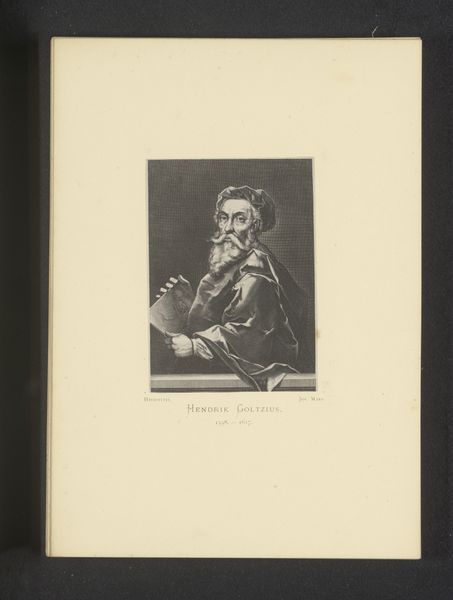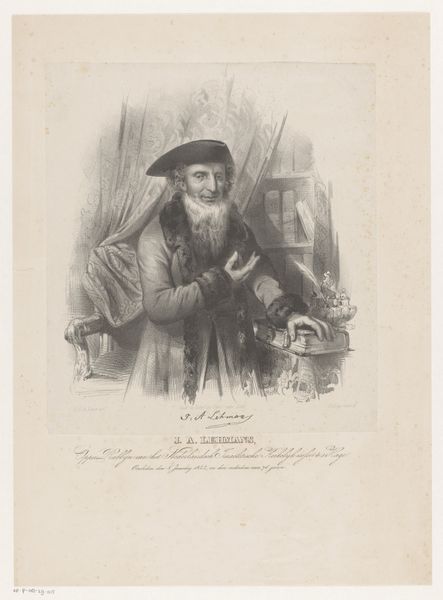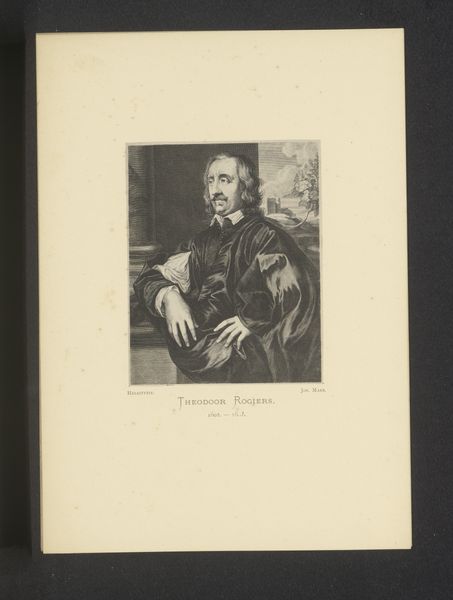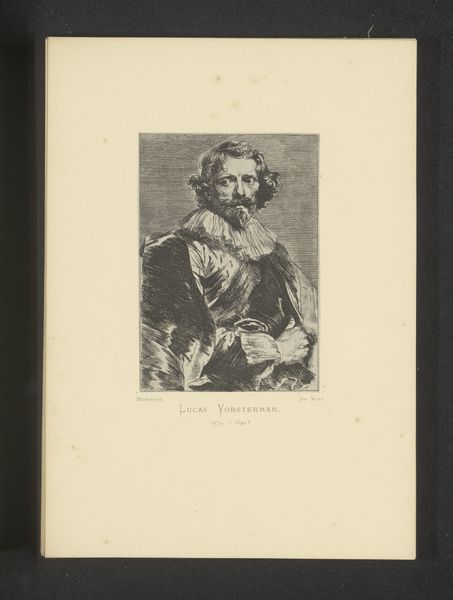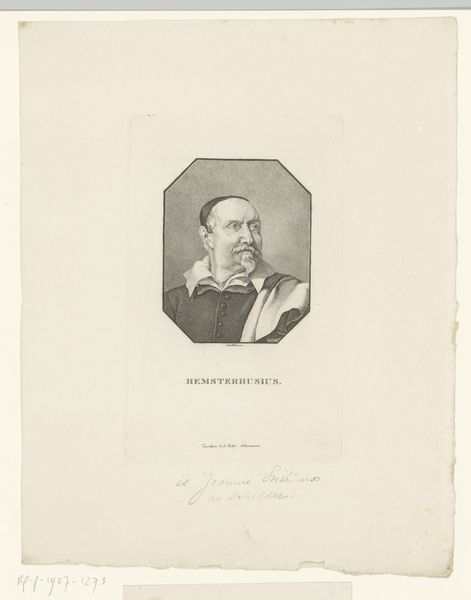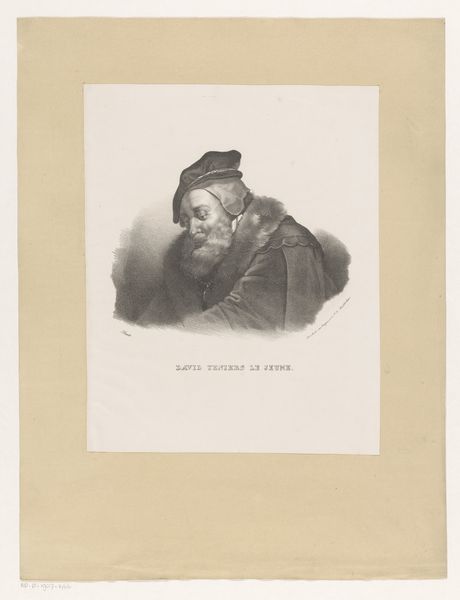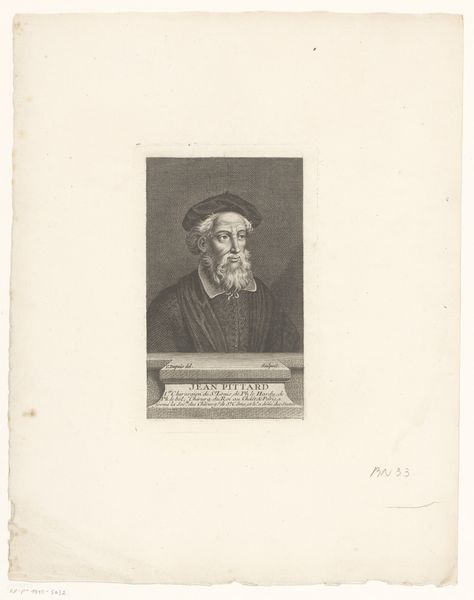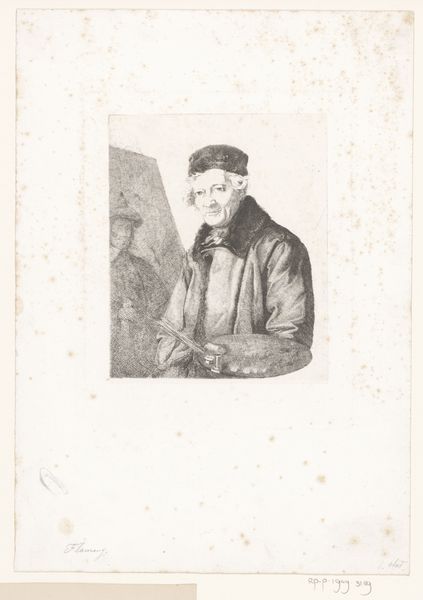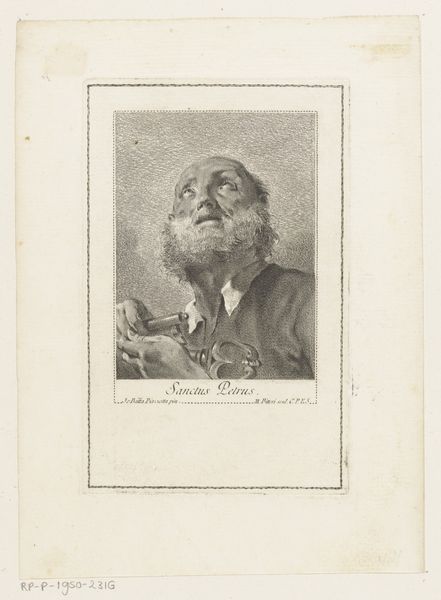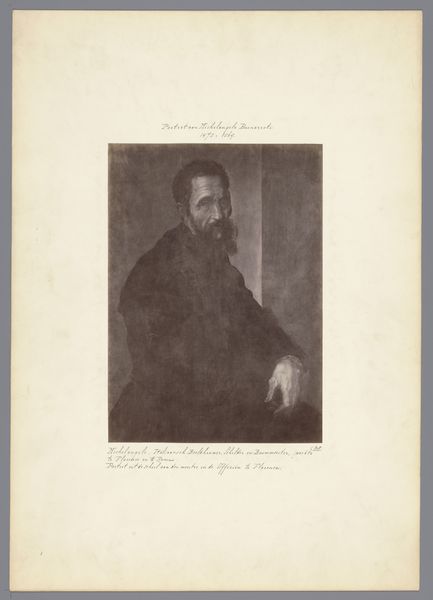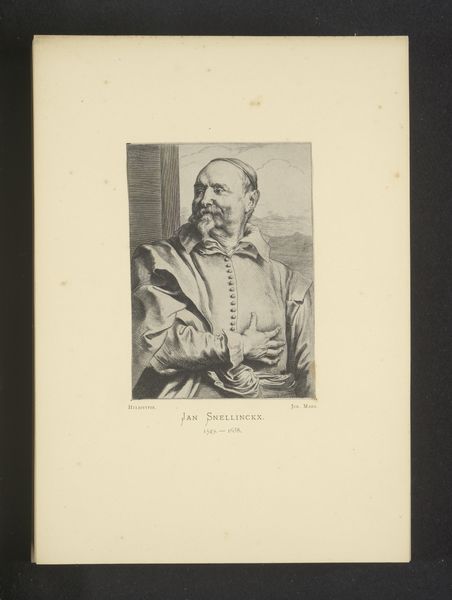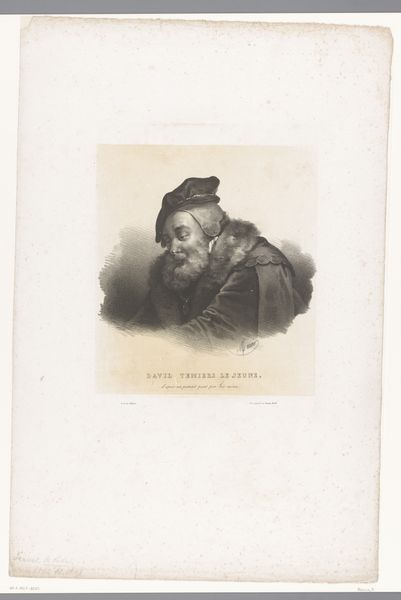
Reproductie van een gravure van een portret van Wenzel Coebergher door Lucas Vorsterman (I) before 1877
0:00
0:00
Dimensions: height 113 mm, width 94 mm
Copyright: Rijks Museum: Open Domain
Editor: So, here we have a print, an engraving to be precise, of Wenzel Coebergher, rendered before 1877 and engraved by Lucas Vorsterman I. It's a very dignified portrait, but also quite somber. What stands out to you about it? Curator: What's interesting here is thinking about how this print functions in the broader context of Coebergher’s legacy. As an architect and engineer for the Habsburgs, Coebergher wielded considerable influence. Reproducing his likeness through engravings—a relatively accessible medium—would have disseminated his image, and by extension, the power he represented. Consider how portraiture during this era played a key role in solidifying social hierarchies and propagating particular ideologies. Editor: That's a great point. So the print isn't just a likeness, it's almost like propaganda? Curator: Exactly. Furthermore, think about the selection of Vorsterman, a well-established engraver. Who commissioned this print and for what purpose? Was it a form of state-sponsored art, intended to glorify Coebergher's contributions to the Habsburg empire? What message was meant to be conveyed and to whom? Editor: Hmm, it's fascinating to think about how the act of reproduction itself carries so much meaning. I never thought about prints this way, seeing them not just as art, but as a tool for social and political maneuvering. Curator: And it's important to remember the social context that made this kind of widespread image distribution possible and effective in communicating power. It makes you wonder how these strategies evolved and are still present in modern-day media. Editor: I'll definitely be looking at prints—and all art, really—through a different lens now! Curator: Me too. Every artwork invites us to unravel a history that’s already happened, and reflect on our own present-day concerns.
Comments
No comments
Be the first to comment and join the conversation on the ultimate creative platform.
